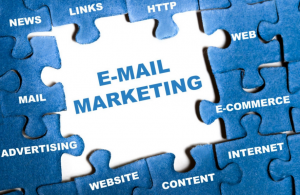 When people read your blog your goal is for them to immediately want to share it with their friends and then click away thinking, “Wow, that was awesome!” With blogs being such a large part of internet marketing today creating wow-worthy content is more important than ever. Here are a few tried and true methods that you should consider if you want your blog to be truly successful.
When people read your blog your goal is for them to immediately want to share it with their friends and then click away thinking, “Wow, that was awesome!” With blogs being such a large part of internet marketing today creating wow-worthy content is more important than ever. Here are a few tried and true methods that you should consider if you want your blog to be truly successful.
Know Your Audience
Remember, audiences change and it is not as simple as you may think to keep on top of who they are. Studying your audience as they grow and develop is important for you to stay ahead of trends. A great example to look at for this is a company like Ivory Soap. They have been around since 1879 and although their audience has always consisted of the same general demographics, their morals and ideas have changed a great deal.
Keep Up-to-Date on Industry Trends
The more you know about your industry, the more knowledge you’ll have to share with your audience and the more valuable you’ll be to them. Being aware of what is going on will make you a go-to person for information in the niche you’re involved with. Reading and studying your industry will also improve the quality of how you run your business too.
URL Structure and Tags Matter
Often times bloggers will underestimate the power of the right URL structure and the tags they use on their blog posts. These things still matter. The best URLs consist of unique, keyword-rich titles, and the best tags consist of keywords that are within the content. Don’t forget the tags on your images. Make it all count.
Know Your Numbers
Do you know what kinds of blog posts bring the most attention to your blog? If you don’t, you should. Once you know what types of blog posts get the most shares, views, engagement, and comments, you can create more of that type as well as spiff up the ones you already have.
Create Shareable Content
Content that has valuable information, great images, or content in video form, is shared more than other types of blog posts. Pay attention to what your audience shares and create more of that.
Link Internally
A great way to draw more attention and up the wow-factor in your blog posts is to develop good linking practices by linking internally to other blog posts that relate to the current post your audience is already reading.
Understand How Keywords Work
From short tail to long tail and all in between, there are many different types of keywords. The more you can understand how keywords work and which ones are important within your niche, the better you can use them to your advantage.
Use Many Forms of Content
Don’t skimp on your content variety. Use different forms of video, images, podcasts, text, and more. Your blog will be much more dynamic and interesting if the content used is not always the same. For example, some “how to” blogs might be best presented along with a video rather than a text only post.
Engage Your Readers
Don’t leave out your calls to action and reader engagement ideas like asking them to buy, click, read, or comment. By promoting it upfront you’ll get a lot more engagement than if you just hope it happens on its own.
Creating wow-worthy content for your blog will come naturally the more you understand your niche and what your audience likes best. If you’re unsure about anything, consider polling your audience to find out what types of content they prefer and what products and services they need most. Stay focused and up-to-date and your blog will be successful.



